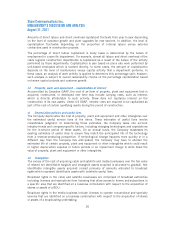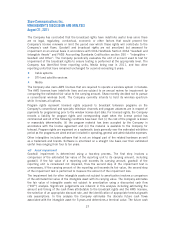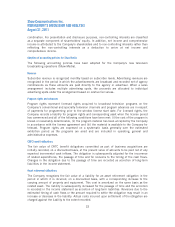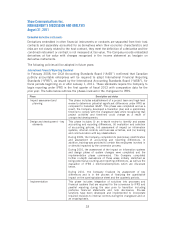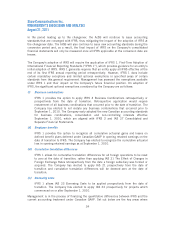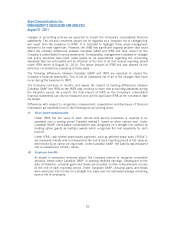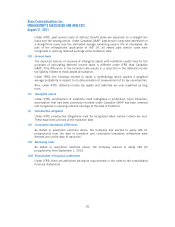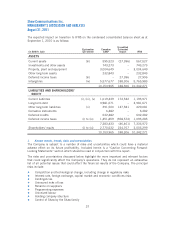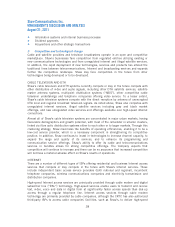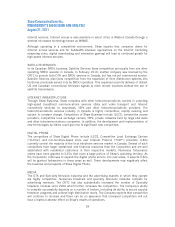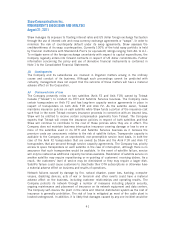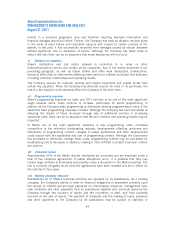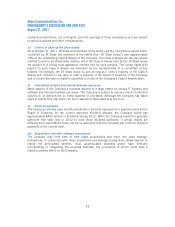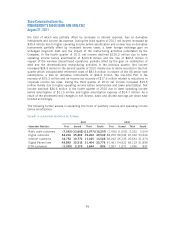Shaw 2011 Annual Report Download - page 40
Download and view the complete annual report
Please find page 40 of the 2011 Shaw annual report below. You can navigate through the pages in the report by either clicking on the pages listed below, or by using the keyword search tool below to find specific information within the annual report.Shaw Communications Inc.
MANAGEMENT’S DISCUSSION AND ANALYSIS
August 31, 2011
Under IFRS, past service costs of defined benefit plans are expensed on a straight-line
basis over the vesting period. Under Canadian GAAP, past service costs were amortized on
a straight-line basis over the estimated average remaining service life of employees. As
part of the retrospective application of IAS 19, all vested past service costs were
recognized in opening retained earnings at the transition date.
(iii) Income taxes
The expected manner of recovery of intangible assets with indefinite useful lives for the
purposes of calculating deferred income taxes is different under IFRS than Canadian
GAAP. This difference in the inclusion rate results in a reduction in the deferred income
tax liability related to these assets at transition.
Under IFRS, the Company elected to adopt a methodology which applies a weighted
average probability in respect to its determination of measurement of its tax uncertainties.
Also, under IFRS, deferred income tax assets and liabilities are only classified as long
term.
(iv) Intangible assets
Under IFRS, amortization of indefinite lived intangibles is prohibited. Upon transition,
amortization that had been previously recorded under Canadian GAAP has been reversed
and recognized in opening retained earnings at the date of transition.
(v) Constructive obligation
Under IFRS constructive obligations must be recognized when certain criteria are met.
These have been accrued at the transition date.
(vi) Cumulative translation differences
As stated in exemption elections above, the Company has elected to apply IAS 21
prospectively from the date of transition and cumulative translation differences were
deemed zero at the date of transition.
(vii) Borrowing costs
As stated in exemption elections above, the Company elected to adopt IAS 23
prospectively from September 1, 2010.
(viii) Presentation of financial statements
Under IFRS, there are additional disclosure requirements in the notes to the consolidated
financial statements.
36


